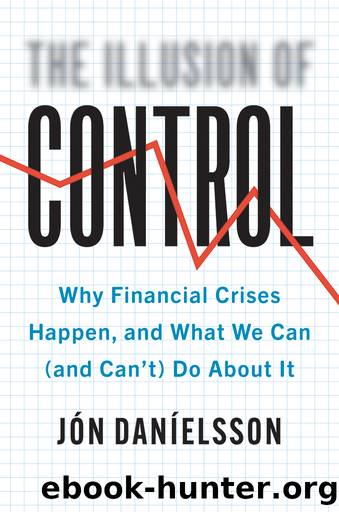The Illusion of Control by Jon Danielsson

Author:Jon Danielsson
Language: eng
Format: epub
Publisher: Yale University Press
Published: 2022-01-15T00:00:00+00:00
Figure 27. Quant crisis, 2017. Credit: Lukas Bischoff/IllustrationX.
All the riskometers and clever pricing models failed to anticipate such an eventuality. Losses were substantial. Global Alpha lost 7.7 percent in July 2007 and a further 22.7 percent in August. It was not alone, as most other quant funds suffered similar losses. By comparison, the US stock markets fell 3.3 percent in July and increased 1.3 percent in August. Global Alpha was eventually closed in the autumn of 2011 after even more losses. What happened was that the masters of the quant funds overestimated their cleverness. Each thought it was the smartest, using unique and state-of-the-art techniques to make money. They werenât, as underneath they were all doing the same thing. It wasnât visible when nothing was happening as in the tranquil years of the great moderation. All that was needed was a trigger. Typical endogenous risk crash, just like the wobble of the Millennium Bridge.
Crises happen when a hidden risk factor hits an unseen trigger, precisely what happened here. The hidden risk factor was how all the algorithms were programmed to react in the same way to market turmoil. Completely unknown until a sufficiently large price drop triggered their self-preservation tendencies: David Viniar, the then Goldman chief financial officer, was tasked with explaining Alpha fundâs losses to the world. âWe were seeing things that were 25-standard deviation moves, several days in a row.â Under the normal distribution, the only way such a statement has any meaning, a 25-standard-deviation loss is expected to happen one day out of 10137, which is 1 with 137 zeros after it. For comparison, NASA tells us that the universeâs age is about 14 billion years, while the Earth is a lot younger at 4.5 billion years.
Either the quant funds got really, really unlucky or they werenât nearly as clever as they thought they were. Through the lens of endogenous risk, the 2007 Quantland crisis was inevitable. The combination of the great moderation with aggressive market participants aiming to exploit the tranquility. After all, what is our natural reaction when we perceive risk as being very low? Certainly not to sit on our hands and be conservative. No, we follow Minsky and take more risk. In the beginning with no impact on the markets, but eventually more and more funds pile into the action. Hugely profitable at the start. Returns are higher and higher because everybody enters the markets, while measured risk remains low because the prices are going up steadily but with little volatility.
The riskometers couldnât fathom such an eventuality in 2007. Because it wasnât in the data, it wasnât detected. It wasnât in their DNA. Fundamentally, when the quants started to use the riskometers to make investment decisions they changed the financial system, undermining the quality of the risk measurements. The 2007 quant crisis was inevitable. Risk is endogenous even if the riskometers assume otherwise.
Demand for JunkâFinancial Alchemy: CDOs and the 2008 Crisis
Before Dmitri Mendeleev published the periodic table in 1869, the concept of the chemical element was not well understood.
Download
This site does not store any files on its server. We only index and link to content provided by other sites. Please contact the content providers to delete copyright contents if any and email us, we'll remove relevant links or contents immediately.
Zero to IPO: Over $1 Trillion of Actionable Advice from the World's Most Successful Entrepreneurs by Frederic Kerrest(3939)
Harry Potter and the Goblet Of Fire by J.K. Rowling(3581)
Never by Ken Follett(3489)
Machine Learning at Scale with H2O by Gregory Keys | David Whiting(3440)
Ogilvy on Advertising by David Ogilvy(3289)
Shadow of Night by Deborah Harkness(3154)
The Man Who Died Twice by Richard Osman(2777)
Book of Life by Deborah Harkness(2696)
My Brilliant Friend by Elena Ferrante(2675)
How Proust Can Change Your Life by Alain De Botton(2588)
0041152001443424520 .pdf by Unknown(2569)
Will by Will Smith(2547)
The Tipping Point by Malcolm Gladwell(2528)
How to Pay Zero Taxes, 2018 by Jeff A. Schnepper(2456)
Purple Hibiscus by Chimamanda Ngozi Adichie(2418)
Hooked: A Dark, Contemporary Romance (Never After Series) by Emily McIntire(2397)
Rationality by Steven Pinker(2123)
Borders by unknow(2091)
Daughter of Smoke and Bone by Laini Taylor(2056)
